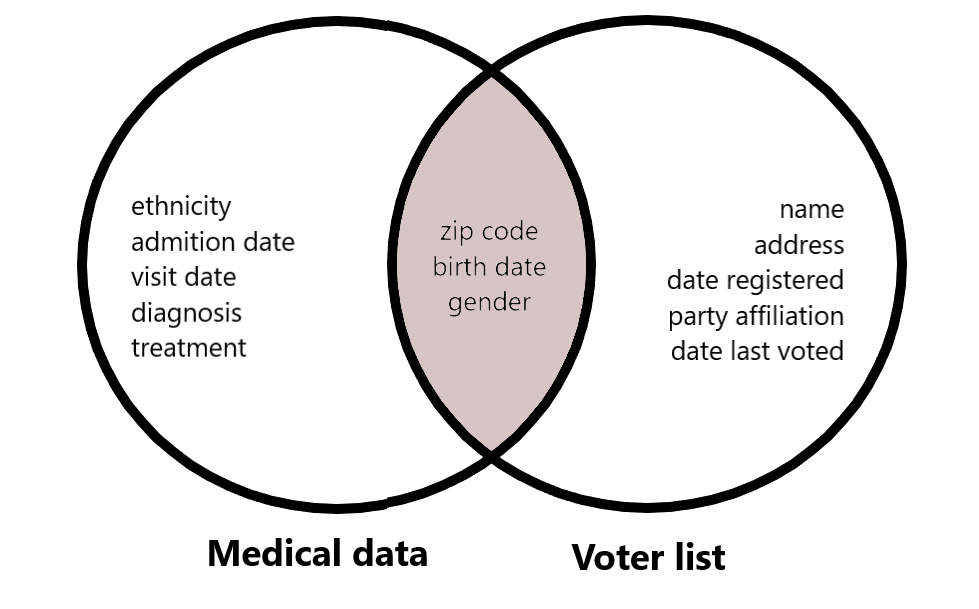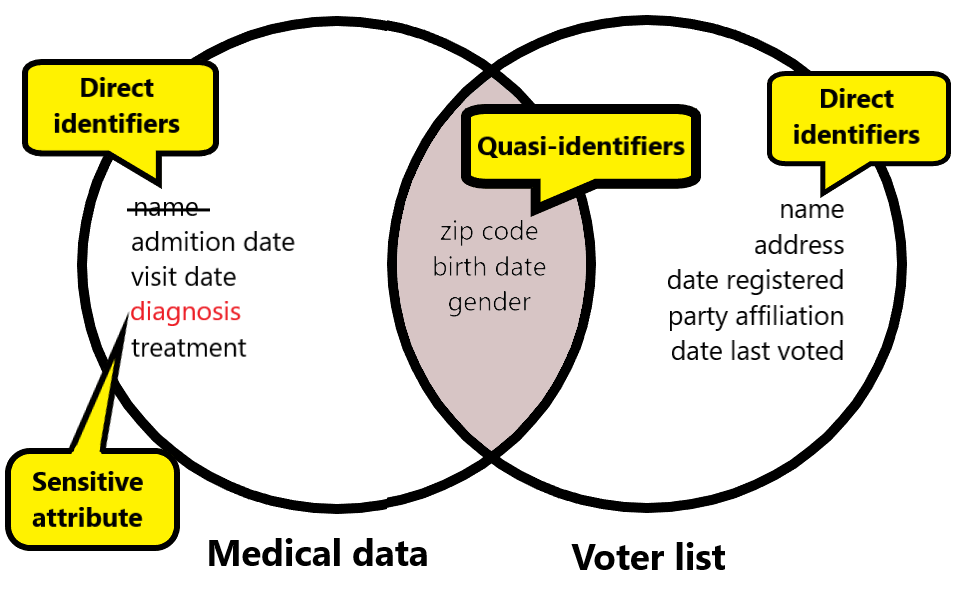Introduction to K-anonymity
Data Privacy and Anonymization in Python

Rebeca Gonzalez
Data engineer
Why is k-anonymity important?

Why is it important?
- Six people had his birth date
- Only three were men
- He was the only one in his ZIP code

How to prevent this attack?
Only one record had the demographic values of the governor.
Deleting all the demographic information would leave the data useless for analysis.
What if there is a middle ground to make sure that the demographic values are no longer unique in the dataset?
Definition of k-anonymity
$$ $$ $$ $$ $$ $$ At least k individuals in the dataset share the set of attributes that might become identifying for each individual.
Definition of k-anonymity

K-anonymous dataset
2-anonymous:
ZIP code Age
0 4217 34
1 4217 34
2 1742 77
3 1742 77
Every combination of values for identifying columns in the dataset appears at least for k different records.
Not 2-anonymous:
ZIP code Age
0 4217 34
1 4217 34
2 1742 77
3 1743 77
K-anonymity: Terminology

Medical data dataset
# Explore DataFrame
medical_df.head()
Age Department Condition
0 34 Marketing Anxiety disorders
1 46 Finance Flu
2 41 Finance Flu
3 62 Marketing Anxiety disorders
4 44 Marketing Anxiety disorders
Privacy attributes
Privacy attributes:
- Identifying: Could be SSN and ID numbers.
- Quasi-identifying: Age and department from our dataset
- Sensitives: Medical condition from our dataset
Exploring unique combination of quasi-identifiers
# Calculate how many unique combinations are for Age and Department
medical_df.groupby(['Age','Department']).size().reset_index(name='Count')
Age Department Count
0 30 Production 2
1 31 Marketing 1
2 32 Marketing 1
3 32 Production 1
4 33 Production 1
5 34 Finance 1
6 34 Marketing 1
7 34 Production 1
8 35 Marketing 1
9 36 Finance 2
10 38 Finance 1
11 38 Production 1
Approach: generalization
# Generalize Age by creating 4 groups of intervals medical_df['Age_group'] = pd.cut(medical_df['Age'], bins=4)# Explore the dataset with intervals medical_df.head()
Age Department Condition Age_group
0 34 Marketing Anxiety disorders (29.964, 39.0]
1 46 Finance Flu (39.0, 48.0]
2 41 Finance Flu (39.0, 48.0]
3 62 Marketing Anxiety disorders (57.0, 66.0]
4 44 Marketing Anxiety disorders (39.0, 48.0]
Approach: generalization
# Calculate how many unique combinations are for Age and Department
medical_df.groupby(['Age_group','Department']).size().reset_index(name='Count')
Age_group Department Count
0 (29.964, 39.0] Finance 4
1 (29.964, 39.0] Marketing 4
2 (29.964, 39.0] Production 6
3 (39.0, 48.0] Finance 8
4 (39.0, 48.0] Marketing 5
5 (39.0, 48.0] Production 4
6 (48.0, 57.0] Finance 3
7 (48.0, 57.0] Marketing 2
8 (48.0, 57.0] Production 4
Approach: generalization
# Set k to be 2, for a 2-anonymous dataset k = 2# Calculate how many unique combinations are for Age and Department df_count = medical_df.groupby(['Age_group','Department']).size().reset_index(name='Count')# Filter the rows that have count less than k df_count[df_count['Count'] < k]
Age_group Department Count
Let's k-anonymize!
Data Privacy and Anonymization in Python

